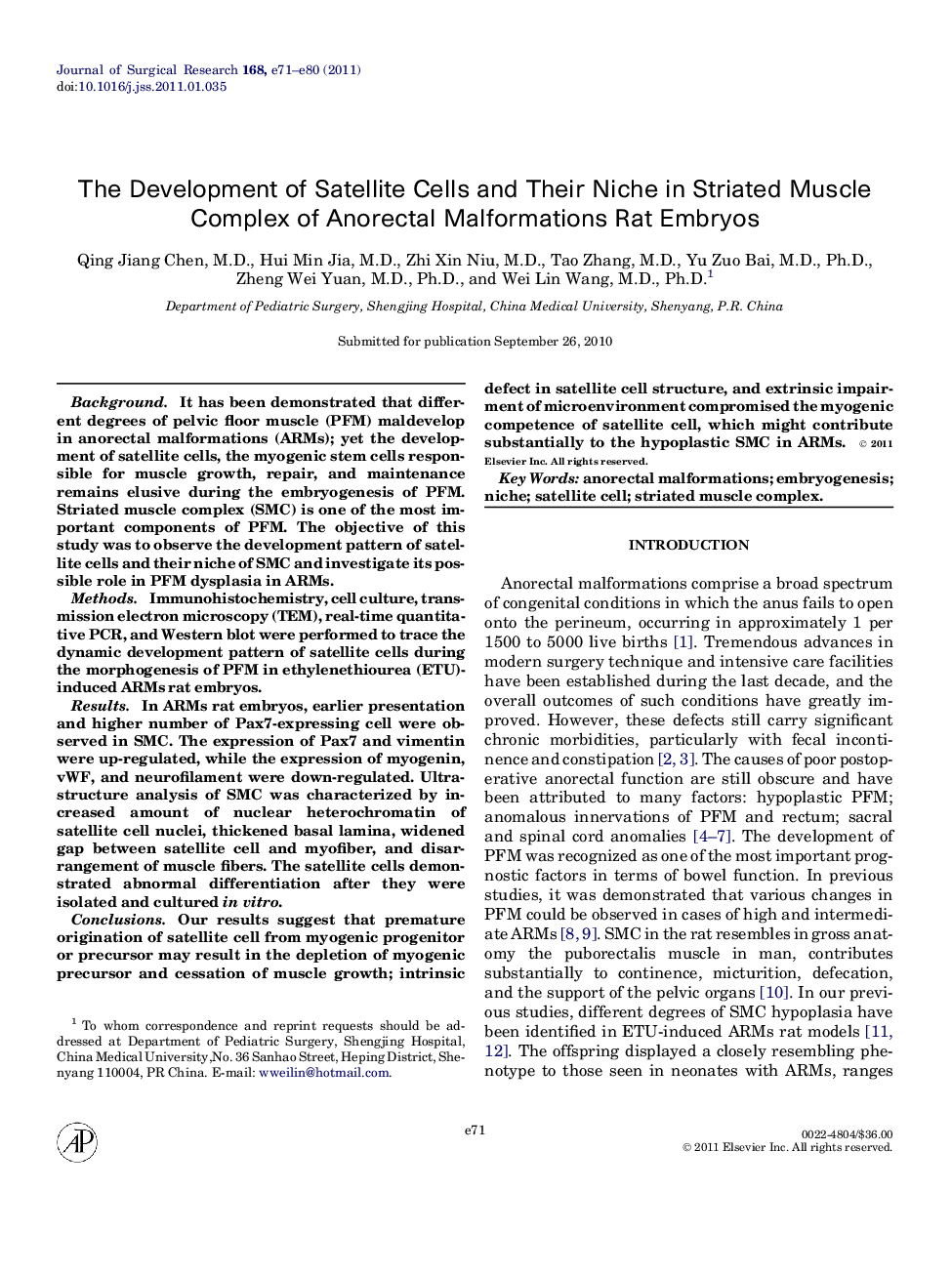| Article ID | Journal | Published Year | Pages | File Type |
|---|---|---|---|---|
| 4302195 | Journal of Surgical Research | 2011 | 10 Pages |
BackgroundIt has been demonstrated that different degrees of pelvic floor muscle (PFM) maldevelop in anorectal malformations (ARMs); yet the development of satellite cells, the myogenic stem cells responsible for muscle growth, repair, and maintenance remains elusive during the embryogenesis of PFM. Striated muscle complex (SMC) is one of the most important components of PFM. The objective of this study was to observe the development pattern of satellite cells and their niche of SMC and investigate its possible role in PFM dysplasia in ARMs.MethodsImmunohistochemistry, cell culture, transmission electron microscopy (TEM), real-time quantitative PCR, and Western blot were performed to trace the dynamic development pattern of satellite cells during the morphogenesis of PFM in ethylenethiourea (ETU)-induced ARMs rat embryos.ResultsIn ARMs rat embryos, earlier presentation and higher number of Pax7-expressing cell were observed in SMC. The expression of Pax7 and vimentin were up-regulated, while the expression of myogenin, vWF, and neurofilament were down-regulated. Ultrastructure analysis of SMC was characterized by increased amount of nuclear heterochromatin of satellite cell nuclei, thickened basal lamina, widened gap between satellite cell and myofiber, and disarrangement of muscle fibers. The satellite cells demonstrated abnormal differentiation after they were isolated and cultured in vitro.ConclusionsOur results suggest that premature origination of satellite cell from myogenic progenitor or precursor may result in the depletion of myogenic precursor and cessation of muscle growth; intrinsic defect in satellite cell structure, and extrinsic impairment of microenvironment compromised the myogenic competence of satellite cell, which might contribute substantially to the hypoplastic SMC in ARMs.
